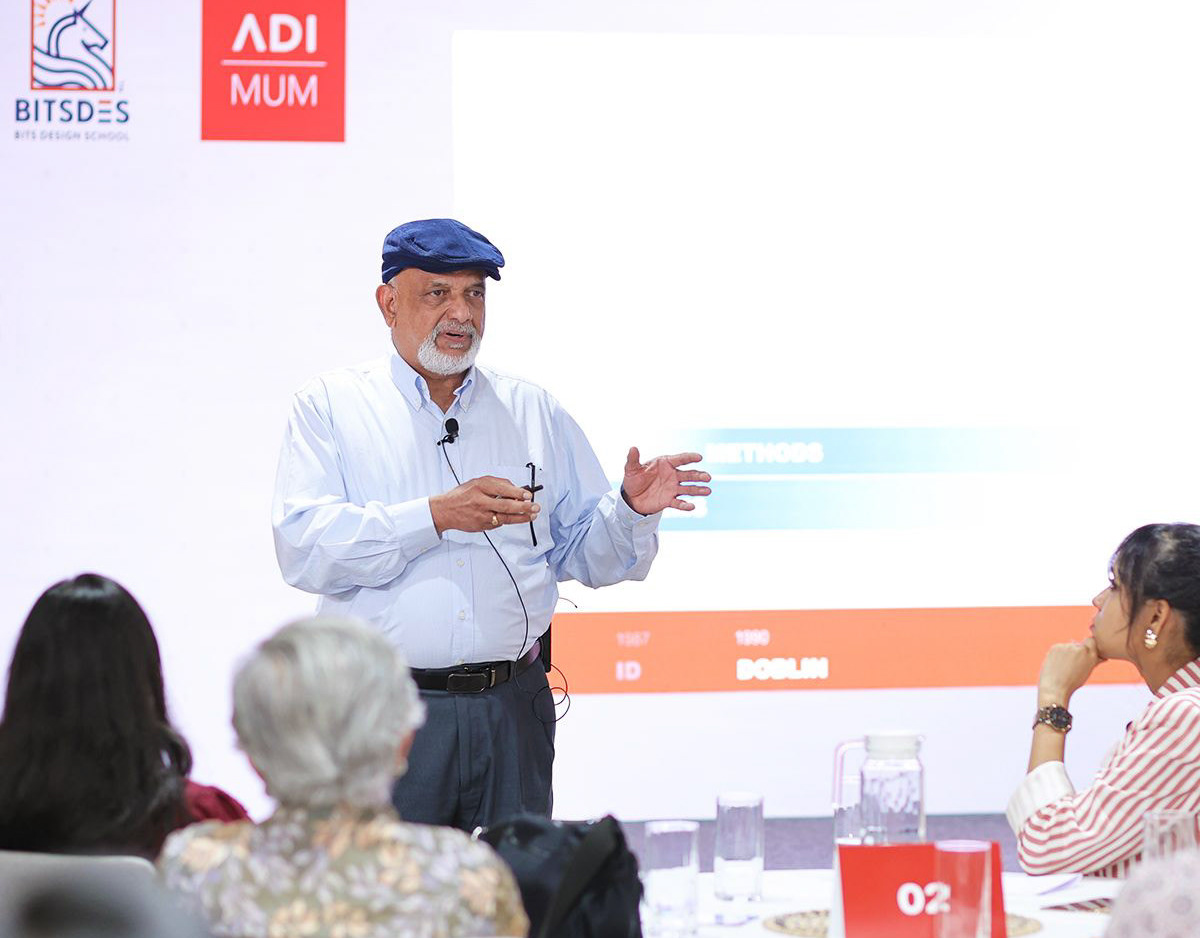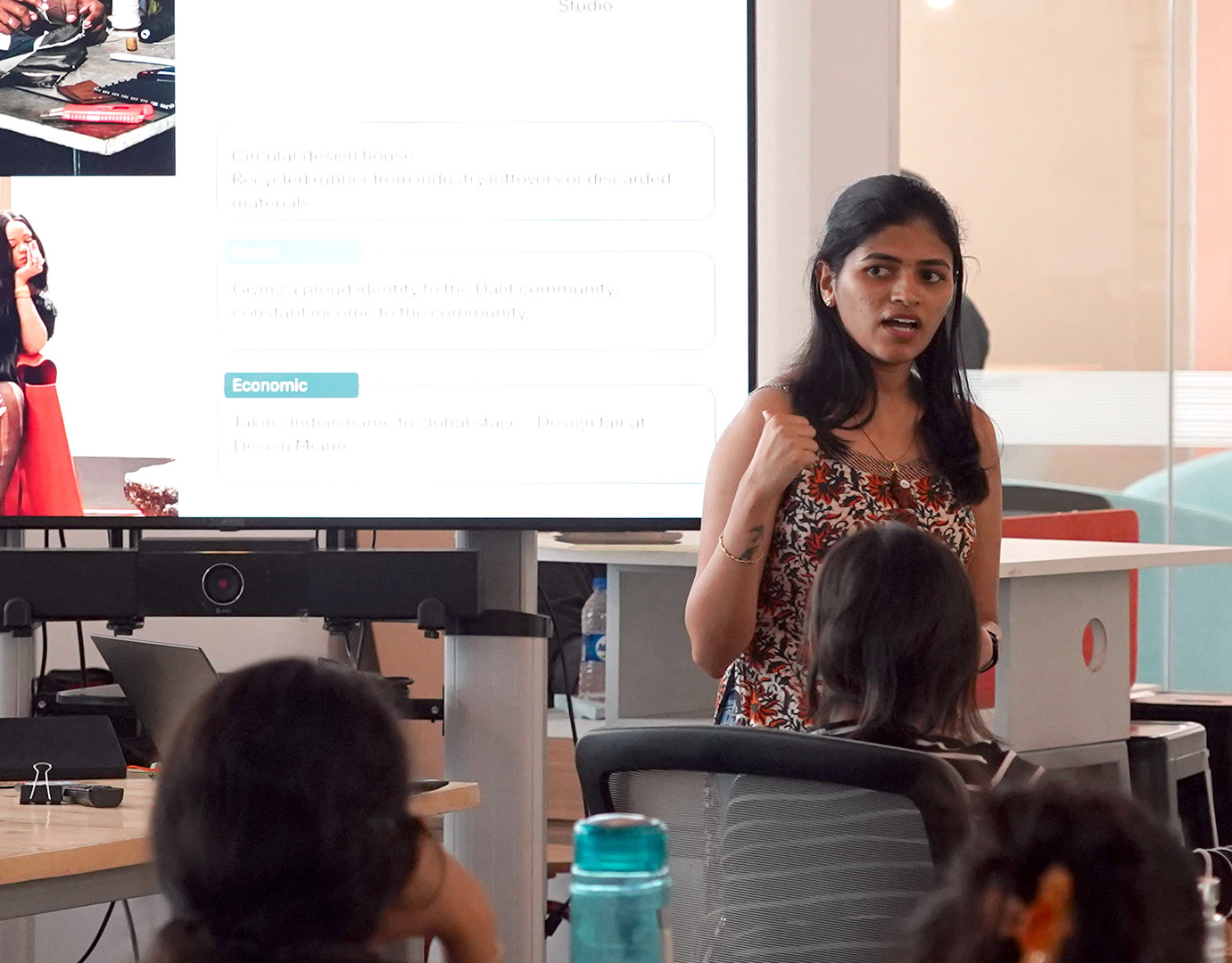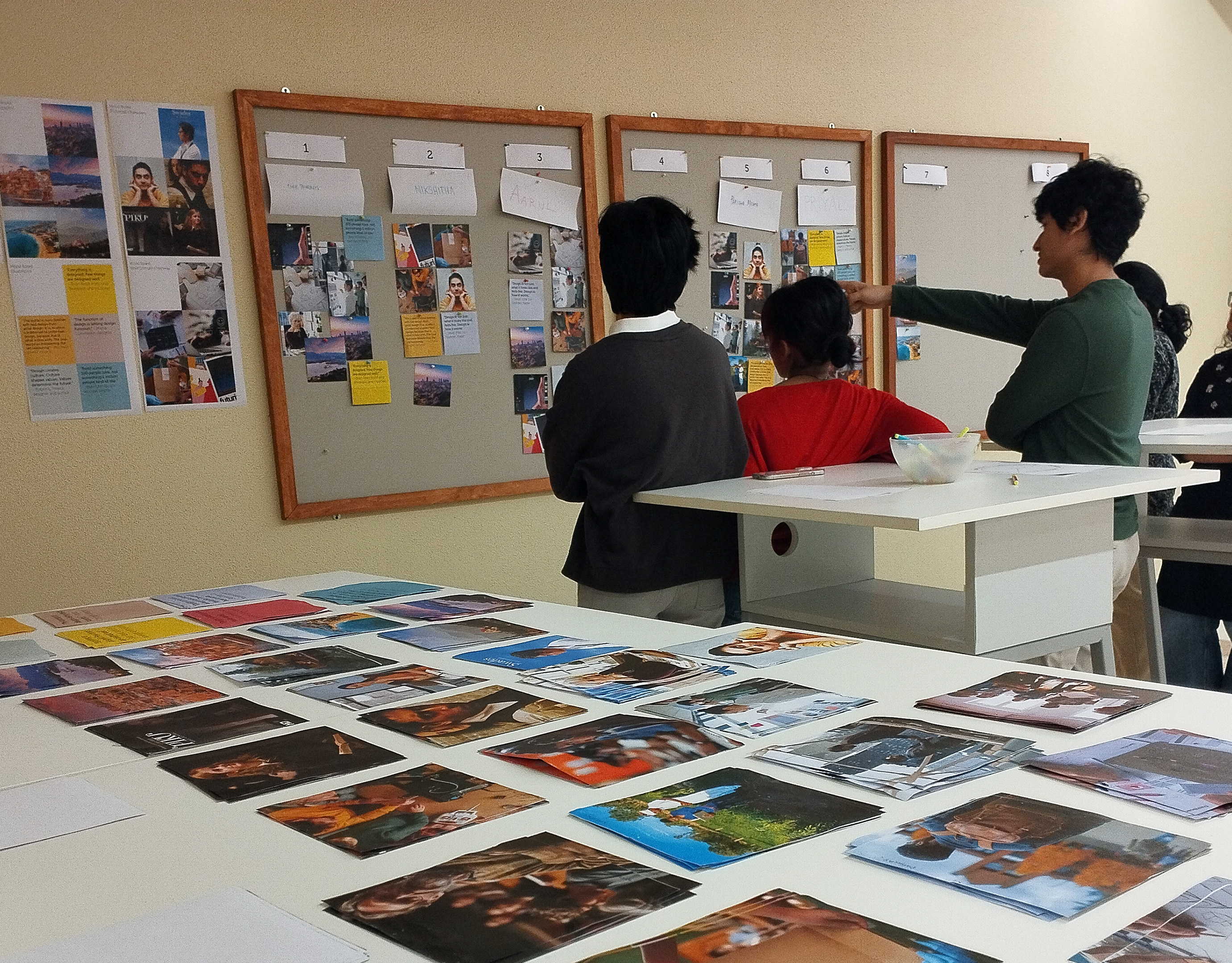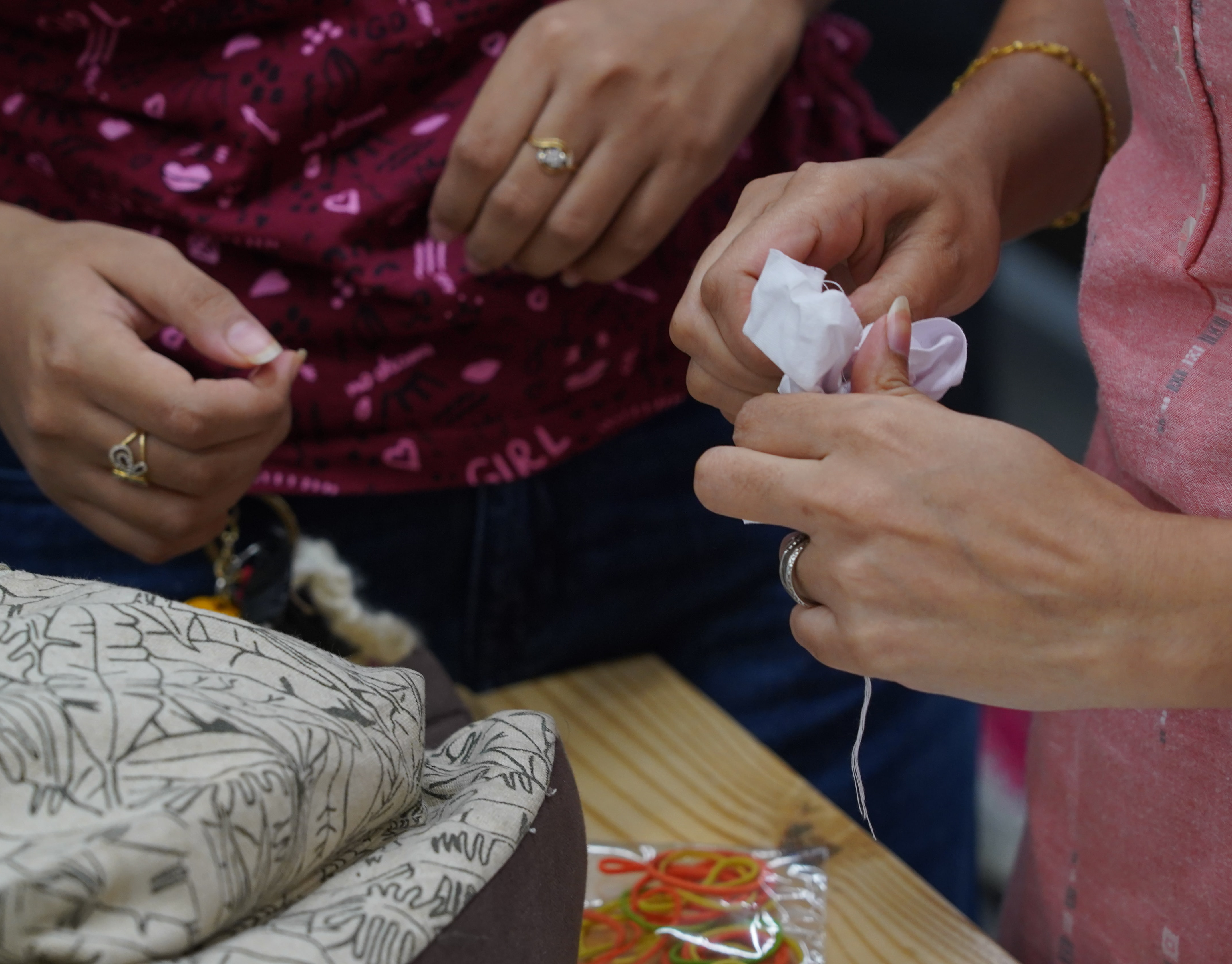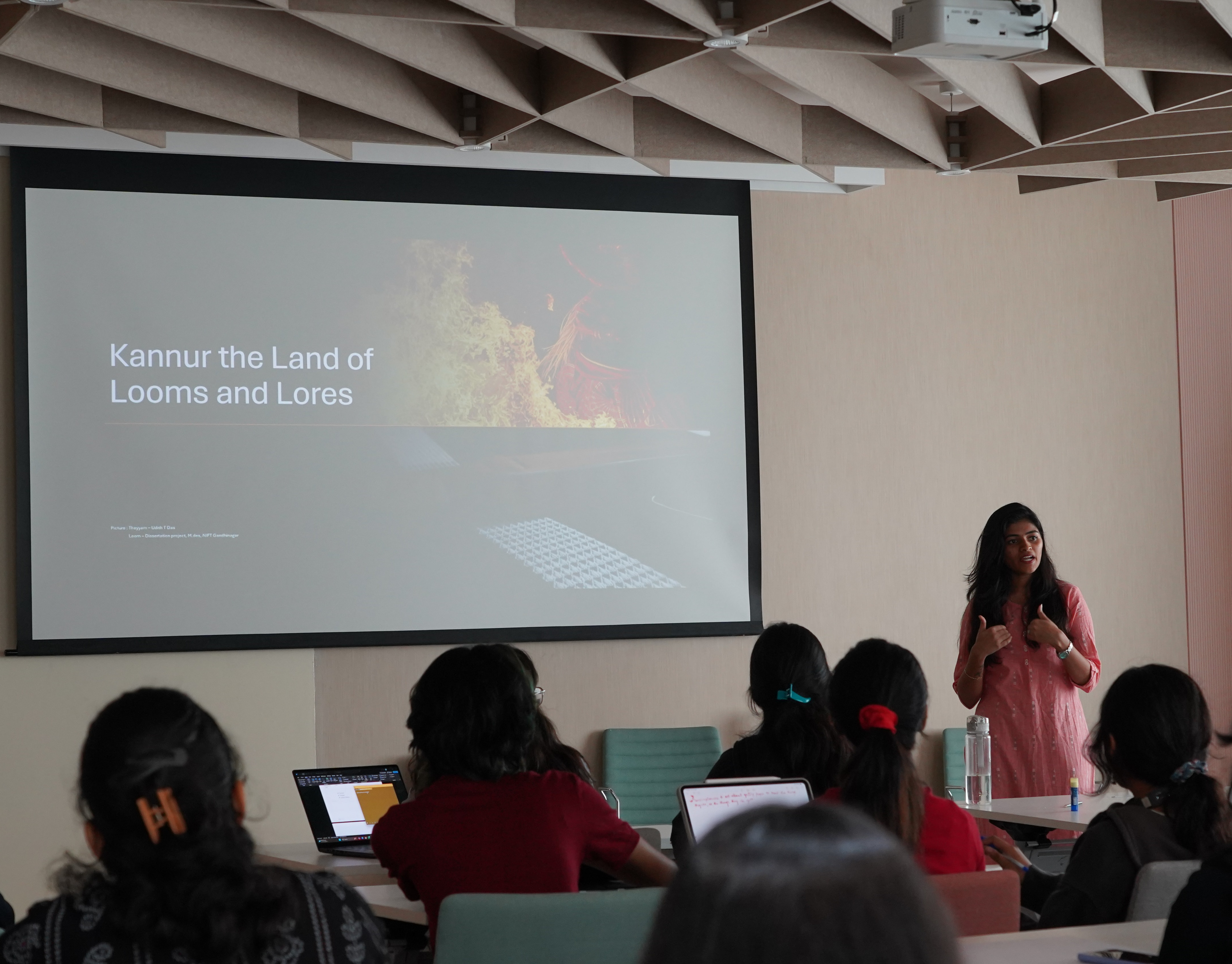• Type: Conference
• Title: Care, Value, Place
• Period / Date: September 2025
• Organization: BITS Design School with RMIT University, Melbourne
• Engagement of Akshaya: Co-designed and co-curated - as a member of the Experience, Exhibition and Delegate team.
• Title: Care, Value, Place
• Period / Date: September 2025
• Organization: BITS Design School with RMIT University, Melbourne
• Engagement of Akshaya: Co-designed and co-curated - as a member of the Experience, Exhibition and Delegate team.
OVERVIEW
BITS Design School hosted collaborating with RMIT an international conference focusing on innovative and emerging opportunities in areas such as urban ecological restoration, community-managed natural farming, sustainable livelihoods in waste ecosystems, traditional knowledge and frugal innovation, two-wheeled commerce in 15-minute cities, and water systems with social hydrology.
BITS Design School hosted collaborating with RMIT an international conference focusing on innovative and emerging opportunities in areas such as urban ecological restoration, community-managed natural farming, sustainable livelihoods in waste ecosystems, traditional knowledge and frugal innovation, two-wheeled commerce in 15-minute cities, and water systems with social hydrology.
As a member of the organizing team at BITS Design School, I contributed to the delegates and speakers teams and the exhibition planning team. In the delegates and speakers team, we managed the crowd from invitation till the end of the event, coordinating with them for the material for exhibition as well.
The exhibition showcased the work and details of the invited speakers, as well as projects from delegates who wished to present their work at the conference.
The conference was curated by Prof. John Thackara, Writer, Curator, Professor at Tongji University, and advisor to BITS Design School. At "Care, Value, Place", over two days, a group of experienced project leaders, together with expert contributors, collaborated to identify the practical steps that can be taken, right now, to effect lasting, positive systemic change. The conference focused on innovative and emerging opportunities in areas such as urban ecological restoration, community-managed natural farming, sustainable livelihoods in waste ecosystems, traditional knowledge and frugal innovation, two-wheeled commerce in 15-minute cities, and water systems with social hydrology.
OBJECTIVE
Throughout the conference, discussions and workshops focused on pressing global issues, including the following.
Throughout the conference, discussions and workshops focused on pressing global issues, including the following.
Regenerative Water Systems
Exploring cooperative water management, adaptive design inspired by traditional stepwells, and policy interventions to address inequitable access and groundwater depletion.
Exploring cooperative water management, adaptive design inspired by traditional stepwells, and policy interventions to address inequitable access and groundwater depletion.
Social Life of Mobility
Rethinking mobility as a social connector rather than just a transportation issue, emphasizing accessibility, gender-sensitive design, and community-driven transit systems.
Rethinking mobility as a social connector rather than just a transportation issue, emphasizing accessibility, gender-sensitive design, and community-driven transit systems.
Circular Economy & Craft Innovation
Showcasing grassroots livelihood models that empower marginalized communities through sustainable craft practices, repair economies, and locally driven entrepreneurship.
Showcasing grassroots livelihood models that empower marginalized communities through sustainable craft practices, repair economies, and locally driven entrepreneurship.
Participatory Design & Community-Led Solutions
Encouraging co-creation with communities, focusing on inclusive and adaptive frameworks that promote long-term resilience.
Encouraging co-creation with communities, focusing on inclusive and adaptive frameworks that promote long-term resilience.
THEME
The conference is built around three foundational themes - Care, Value, and Place - each interwoven with the larger goal of creating frameworks for sustainable, equitable, and community-led solutions.
The conference is built around three foundational themes - Care, Value, and Place - each interwoven with the larger goal of creating frameworks for sustainable, equitable, and community-led solutions.
Care
The notion of care goes beyond the provision of services; it emphasizes empathy, responsibility, and meaningful engagement with communities and ecosystems. It challenges participants to think about how care practices can inform design - whether through water management systems, community mobility, or livelihood frameworks. This theme also addresses questions around nurturing the environment, protecting vulnerable populations, and designing systems that foster well-being and resilience.
The notion of care goes beyond the provision of services; it emphasizes empathy, responsibility, and meaningful engagement with communities and ecosystems. It challenges participants to think about how care practices can inform design - whether through water management systems, community mobility, or livelihood frameworks. This theme also addresses questions around nurturing the environment, protecting vulnerable populations, and designing systems that foster well-being and resilience.
Value
The theme of value explores how design can move beyond financial metrics to embrace broader notions of worth - such as cultural, ecological, and social value. How can we reframe value to include sustainability and inclusiveness? What frameworks can foster new value systems that support circular economies, sustainable crafts, and equitable resource distribution? Value here also signifies the importance of investing in human potential, supporting marginalized groups, and designing for long-term community benefit.
The theme of value explores how design can move beyond financial metrics to embrace broader notions of worth - such as cultural, ecological, and social value. How can we reframe value to include sustainability and inclusiveness? What frameworks can foster new value systems that support circular economies, sustainable crafts, and equitable resource distribution? Value here also signifies the importance of investing in human potential, supporting marginalized groups, and designing for long-term community benefit.
Place
Place is not just a physical location but a dynamic space where cultural narratives, local practices, and community life converge. This theme emphasizes designing with an understanding of local contexts, ecosystems, and histories. Participants are challenged to create frameworks that respond to the unique needs of a place - whether through water conservation, inclusive mobility solutions, or place-based livelihoods. The goal is to foster a sense of belonging and rootedness while enabling innovation and adaptation to future needs.
Place is not just a physical location but a dynamic space where cultural narratives, local practices, and community life converge. This theme emphasizes designing with an understanding of local contexts, ecosystems, and histories. Participants are challenged to create frameworks that respond to the unique needs of a place - whether through water conservation, inclusive mobility solutions, or place-based livelihoods. The goal is to foster a sense of belonging and rootedness while enabling innovation and adaptation to future needs.


PROCESS
Akshaya Manoj worked closely with delegates, as well as the experience and exhibition teams. The process began with identifying and inviting grassroots organizations that drive real-world impact. Akshaya coordinated with the creative team to design exhibition posters and curated showcases highlighting the work of speakers and volunteered delegates. The exhibition and overall experience were thoughtfully designed to immerse speakers and attendees in the cultural essence of the event.
Akshaya Manoj worked closely with delegates, as well as the experience and exhibition teams. The process began with identifying and inviting grassroots organizations that drive real-world impact. Akshaya coordinated with the creative team to design exhibition posters and curated showcases highlighting the work of speakers and volunteered delegates. The exhibition and overall experience were thoughtfully designed to immerse speakers and attendees in the cultural essence of the event.
Pre-Conference Planning
The conference planning began with extensive research and outreach to identify grassroots organizations making a tangible impact. Finding the right delegates and speakers who aligned with the conference’s vision was a critical part of the process. Once identified, different teams were there to manage invitations and communication channels were established to ensure clarity on expectations and logistics.
The conference planning began with extensive research and outreach to identify grassroots organizations making a tangible impact. Finding the right delegates and speakers who aligned with the conference’s vision was a critical part of the process. Once identified, different teams were there to manage invitations and communication channels were established to ensure clarity on expectations and logistics.
Exhibition & Experience Design
A key element of the conference was the exhibition, it was an experience reflecting the thematic essence of the event and exhibiting the works of all the speakers and a few delegates who were interested to display their work. The exhibition provides a platform for their projects to reach a wider audience and also becomes a catalyst for conversation around the impact. This required close collaboration with different teams to ensure that every exhibit was engaging, informative, and visually compelling. Beyond the exhibition space, the overall experience was designed to bring cultural depth, allowing attendees to engage with the ethos of the communities represented.
A key element of the conference was the exhibition, it was an experience reflecting the thematic essence of the event and exhibiting the works of all the speakers and a few delegates who were interested to display their work. The exhibition provides a platform for their projects to reach a wider audience and also becomes a catalyst for conversation around the impact. This required close collaboration with different teams to ensure that every exhibit was engaging, informative, and visually compelling. Beyond the exhibition space, the overall experience was designed to bring cultural depth, allowing attendees to engage with the ethos of the communities represented.
On-Site Execution
During the conference, the focus of the team shifted to flawless execution. Every aspect, from registrations to panel discussions, had to run seamlessly. Troubleshooting last-minute challenges, managing session transitions, and ensuring all elements of the exhibition and cultural experiences were executed as planned. Ensuring that speakers felt comfortable, attendees were engaged, and volunteers were effectively deployed required real-time problem-solving and coordination. The goal was to create a space where participants could focus on knowledge-sharing and networking without any operational distractions.
During the conference, the focus of the team shifted to flawless execution. Every aspect, from registrations to panel discussions, had to run seamlessly. Troubleshooting last-minute challenges, managing session transitions, and ensuring all elements of the exhibition and cultural experiences were executed as planned. Ensuring that speakers felt comfortable, attendees were engaged, and volunteers were effectively deployed required real-time problem-solving and coordination. The goal was to create a space where participants could focus on knowledge-sharing and networking without any operational distractions.


OUTCOME
The conference concluded with a strong emphasis on collaboration and action.
The conference concluded with a strong emphasis on collaboration and action.
Key insights included
Systems must be community-led
Top-down solutions often fail without local participation. The most successful models are bottom-up, participatory, and rooted in local knowledge.
Top-down solutions often fail without local participation. The most successful models are bottom-up, participatory, and rooted in local knowledge.
Interdisciplinary collaboration is essential
Solving complex challenges requires a mix of design, technology, policy, and grassroots insights.
Solving complex challenges requires a mix of design, technology, policy, and grassroots insights.
Care is a design principle
Whether in water management, mobility, or livelihoods, design should center around care for people and the environment.
Whether in water management, mobility, or livelihoods, design should center around care for people and the environment.
Value beyond profit
New economic models need to prioritize sustainability and social equity over short-term financial gains.
New economic models need to prioritize sustainability and social equity over short-term financial gains.
Place matters
Designing with respect for local history, ecosystems, and cultures leads to more sustainable and impactful solutions.
Designing with respect for local history, ecosystems, and cultures leads to more sustainable and impactful solutions.
10 Principles of a Good Project derived from Care Value Place Conference
1. Community-Centered Design
• Involvement of the local community: Ensure relevance and sustainability by engaging the local community.
• Grassroots championing: Identify and collaborate with local leaders to foster ownership and long-term impact.
• Accountability to the community: Maintain continuous feedback and engagement with the community throughout all project phases to ensure transparency and trust.
• Involvement of the local community: Ensure relevance and sustainability by engaging the local community.
• Grassroots championing: Identify and collaborate with local leaders to foster ownership and long-term impact.
• Accountability to the community: Maintain continuous feedback and engagement with the community throughout all project phases to ensure transparency and trust.
2. Clear Objectives & Scalability
• Clear goals and objectives: Break down complex tasks into manageable parts for smooth execution.
• Scalability: Design projects with scalability in mind, allowing for expansion or replication.
• Outcome-based framework: Ensure the project delivers tangible and measurable results.
• Clear goals and objectives: Break down complex tasks into manageable parts for smooth execution.
• Scalability: Design projects with scalability in mind, allowing for expansion or replication.
• Outcome-based framework: Ensure the project delivers tangible and measurable results.
3. Ethical and Inclusive Design
• Inclusion and equity: Include all community segments, especially marginalized or vulnerable groups, in the project’s design and execution.
• Ethics and responsibility: Uphold ethical considerations and responsible design practices to maintain project integrity and sustainability.
• Inclusion and equity: Include all community segments, especially marginalized or vulnerable groups, in the project’s design and execution.
• Ethics and responsibility: Uphold ethical considerations and responsible design practices to maintain project integrity and sustainability.
4. Problem-Solving and Needs Assessment
• Problem identification: Conduct thorough research and community engagement to properly identify problems.
• Needs-based approach: Address the real needs of the community, as identified by the community itself.
• Problem identification: Conduct thorough research and community engagement to properly identify problems.
• Needs-based approach: Address the real needs of the community, as identified by the community itself.
5. Learning and Knowledge Sharing
• Knowledge transfer: Create opportunities for learning and knowledge sharing among different groups (local communities, professionals, students, etc.).
• Capacity building: Focus on building capacity within the community.
• Knowledge transfer: Create opportunities for learning and knowledge sharing among different groups (local communities, professionals, students, etc.).
• Capacity building: Focus on building capacity within the community.
6. Resilience and Risk Management
• Risk awareness: Identify potential risks and prepare to mitigate them, incorporating resilience strategies to withstand setbacks.
• Context sensitivity: Be aware of and adapt to the social, cultural, and political dynamics of the local community.
• Risk awareness: Identify potential risks and prepare to mitigate them, incorporating resilience strategies to withstand setbacks.
• Context sensitivity: Be aware of and adapt to the social, cultural, and political dynamics of the local community.
7. Collaboration and Team Dynamics
• Interdisciplinary collaboration: Foster collaboration between different fields, including design, engineering, social sciences, and more.
• Stakeholder involvement: Engage all relevant stakeholders early in the project and keep them involved throughout the process.
• Interdisciplinary collaboration: Foster collaboration between different fields, including design, engineering, social sciences, and more.
• Stakeholder involvement: Engage all relevant stakeholders early in the project and keep them involved throughout the process.
8. Sustainability and Long-Term Impact
• Sustainable approaches: Plan with a focus on long-term sustainability, considering both environmental impact and community benefit.
• Resource efficiency: Use available resources efficiently, including local materials and labor.
• Longevity and flexibility: Ensure the project is flexible enough to adapt to changing circumstances and long-term needs.
• Sustainable approaches: Plan with a focus on long-term sustainability, considering both environmental impact and community benefit.
• Resource efficiency: Use available resources efficiently, including local materials and labor.
• Longevity and flexibility: Ensure the project is flexible enough to adapt to changing circumstances and long-term needs.
9. Iterative and Adaptive Processes
• Iteration and feedback loops: Adapt based on real-time insights and feedback from the community.
Prototyping and testing: Build, test, and refine solutions before final implementation.
• Iteration and feedback loops: Adapt based on real-time insights and feedback from the community.
Prototyping and testing: Build, test, and refine solutions before final implementation.
10. Transparency and Communication
• Open communication: Maintain transparent communication with regular updates to all stakeholders.
• Documentation: Properly document the project process to ensure knowledge transfer and accountability.
• Open communication: Maintain transparent communication with regular updates to all stakeholders.
• Documentation: Properly document the project process to ensure knowledge transfer and accountability.
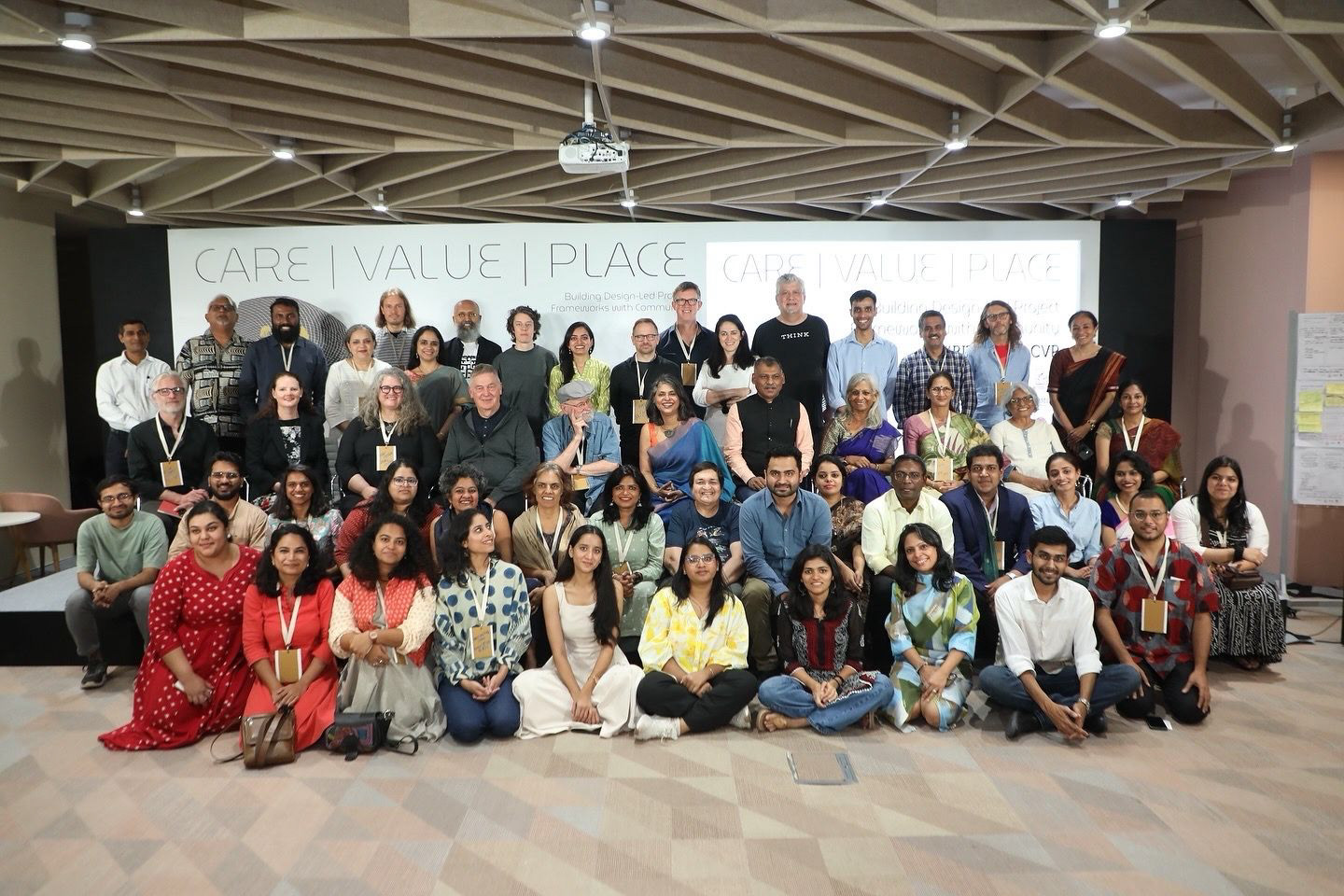
Conference Participants with the team
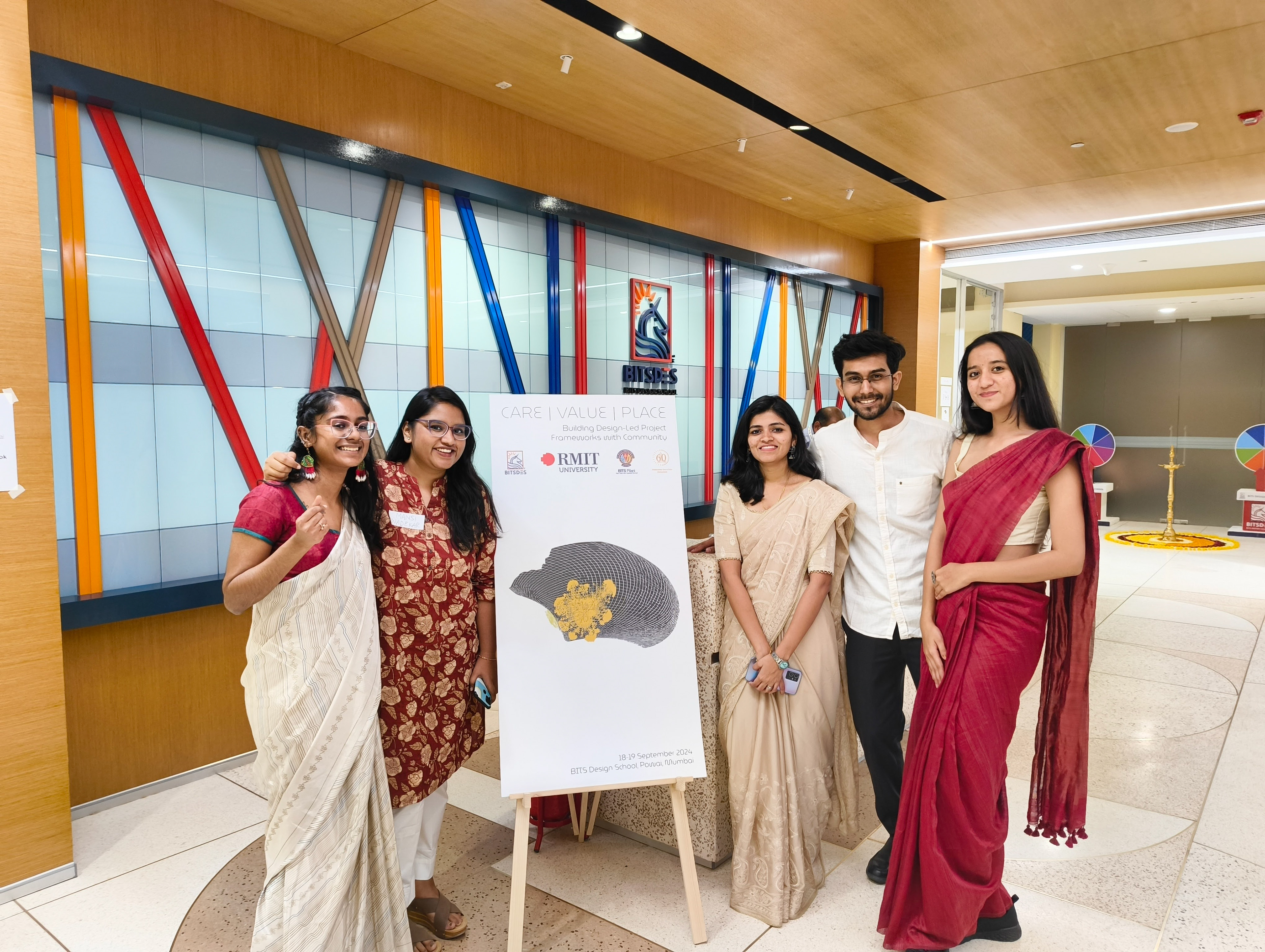
BITS Design Team - Academic Fellows

BITS and RMIT Team

Conference Proceedings

Conference Proceedings

Conference Proceedings

Exhibition Space

Exhibition Space

Exhibition Space
CONCLUSION
Inputs from Don Norman
At the closing segment, Don Norman, advisor of BITS Design School, shared his views on the collaborative projects developed by the provocateurs and the inputs from the contributors, providing a deeper perspective on the work they had undertaken.
At the closing segment, Don Norman, advisor of BITS Design School, shared his views on the collaborative projects developed by the provocateurs and the inputs from the contributors, providing a deeper perspective on the work they had undertaken.
Quotations from Board Members
Nandita Abraham, Founding Dean, BITS Design School
“BITS Design School aims to prepare the new wave of designers for a rapidly changing world, where everything from climate innovations to consumer tech, from healthcare to transportation, and even the way we do business requires constant innovation. The Care Value Place at BITS Design School refers to a guiding Principles of a Good Project that emphasizes a supportive, inclusive, and value-driven environment within the school. This concept is aimed at creating a space where students feel cared for, respected, and valued, fostering both personal growth and professional skill development.”
“BITS Design School aims to prepare the new wave of designers for a rapidly changing world, where everything from climate innovations to consumer tech, from healthcare to transportation, and even the way we do business requires constant innovation. The Care Value Place at BITS Design School refers to a guiding Principles of a Good Project that emphasizes a supportive, inclusive, and value-driven environment within the school. This concept is aimed at creating a space where students feel cared for, respected, and valued, fostering both personal growth and professional skill development.”
Sandy Speicher, Advisor, BITS Design School
“Designers naturally embrace ambiguity, tackling unsolved problems with confidence to find solutions.”
“Designers naturally embrace ambiguity, tackling unsolved problems with confidence to find solutions.”
Andrea Siodmok, Professor & Dean, RMIT University
“If you change just one letter, the word emergency, becomes emergence. The emergence of new possibilities, new businesses, new ideas.”
“If you change just one letter, the word emergency, becomes emergence. The emergence of new possibilities, new businesses, new ideas.”
Don Norman, Advisor, BITS Design School
“We do not design for people; it is ideally with and by people.”
“We do not design for people; it is ideally with and by people.”
John Thackara, Advisor, BITS Design School
“The purpose of innovation is to allow life on earth to thrive through acts of care and attention, and that innovation if it is informed by places will take its proper priority.”
“The purpose of innovation is to allow life on earth to thrive through acts of care and attention, and that innovation if it is informed by places will take its proper priority.”
Dilip Gaur, Member, Board of Governors, BITS Pilani
“To address the challenges of our interconnected world, an interdisciplinary approach is essential. Solutions require collaboration across disciplines, with future leaders acting as orchestrators.”
“To address the challenges of our interconnected world, an interdisciplinary approach is essential. Solutions require collaboration across disciplines, with future leaders acting as orchestrators.”
Summary
The Care, Value, Place conference at BITS Design School, Mumbai, curated by John Thackara in collaboration with RMIT University, marked a significant shift in the discourse around social sustainability and design. Held in September 2024, the conference challenged traditional design paradigms by emphasizing care as a tangible, action-oriented practice rather than an abstract ethical stance. Through discussions on water systems, mobility, recycling, social design, and natural farming, the event positioned design as a catalyst for systemic change driven by grassroots institutions.
The Care, Value, Place conference at BITS Design School, Mumbai, curated by John Thackara in collaboration with RMIT University, marked a significant shift in the discourse around social sustainability and design. Held in September 2024, the conference challenged traditional design paradigms by emphasizing care as a tangible, action-oriented practice rather than an abstract ethical stance. Through discussions on water systems, mobility, recycling, social design, and natural farming, the event positioned design as a catalyst for systemic change driven by grassroots institutions.
John Thackara’s keynote set the tone for the conference by dismantling the conventional narratives of social sustainability. Instead of abstract commitments to climate action, he advocated for a focus on place-based, practical acts of care that restore ecosystems and strengthen local communities. His perspective underscored that true sustainability is rooted in everyday actions—such as water conservation, soil restoration, and fostering social networks—rather than relying on large-scale institutional interventions.
Dilip Gaur, a member of the Board of Governors at BITS Pilani, reflected on the institution's foundational vision of nation-building and leadership development. He emphasized that the success of initiatives discussed during the conference would hinge on their scalability and sustainability, ensuring long-term value creation for society while maintaining environmental responsibility. Dean of BITS Design School, Nandita Abraham, shared insights into the school's mission to serve as a global hub for collaborative and innovative design practices. She expressed the school's commitment to transcending traditional design boundaries by integrating design methodologies with grassroots development projects focused on ecological and societal issues.
The conference brought together designers, policymakers, and community leaders who presented case studies of grassroots-led innovations. These projects illustrated how local knowledge, when combined with design thinking, could generate new forms of value—ones that were not dictated by traditional economic measures like GDP but rather by their ability to sustain communities and ecosystems. The role of community-led projects in redefining systemic change was a recurring theme, highlighting the necessity of participatory approaches in designing solutions for real-world challenges.
A key takeaway from the event was the importance of distributed responsibility. Unlike top-down sustainability models, the discussions emphasized the power of decentralized, community-managed initiatives. Whether it was regenerative water systems, circular economies in recycling, or social infrastructures for mobility, the case studies demonstrated that sustainable transformation is most effective when led by the people directly affected by environmental and social issues.
The Care, Value, Place conference was not just a theoretical discourse; it was a call to action for the design community. It urged practitioners, educators, and students to embed care into their work—bridging the gap between design and community well-being. By the end of the event, the conference had successfully redefined the role of design in sustainability, shifting the conversation from distant policy goals to immediate, actionable engagements with people and their places. This shift is expected to influence future projects and collaborations, inspiring a generation of designers to approach sustainability through the lens of care, participation, and localized action.
Browse portfolio:

